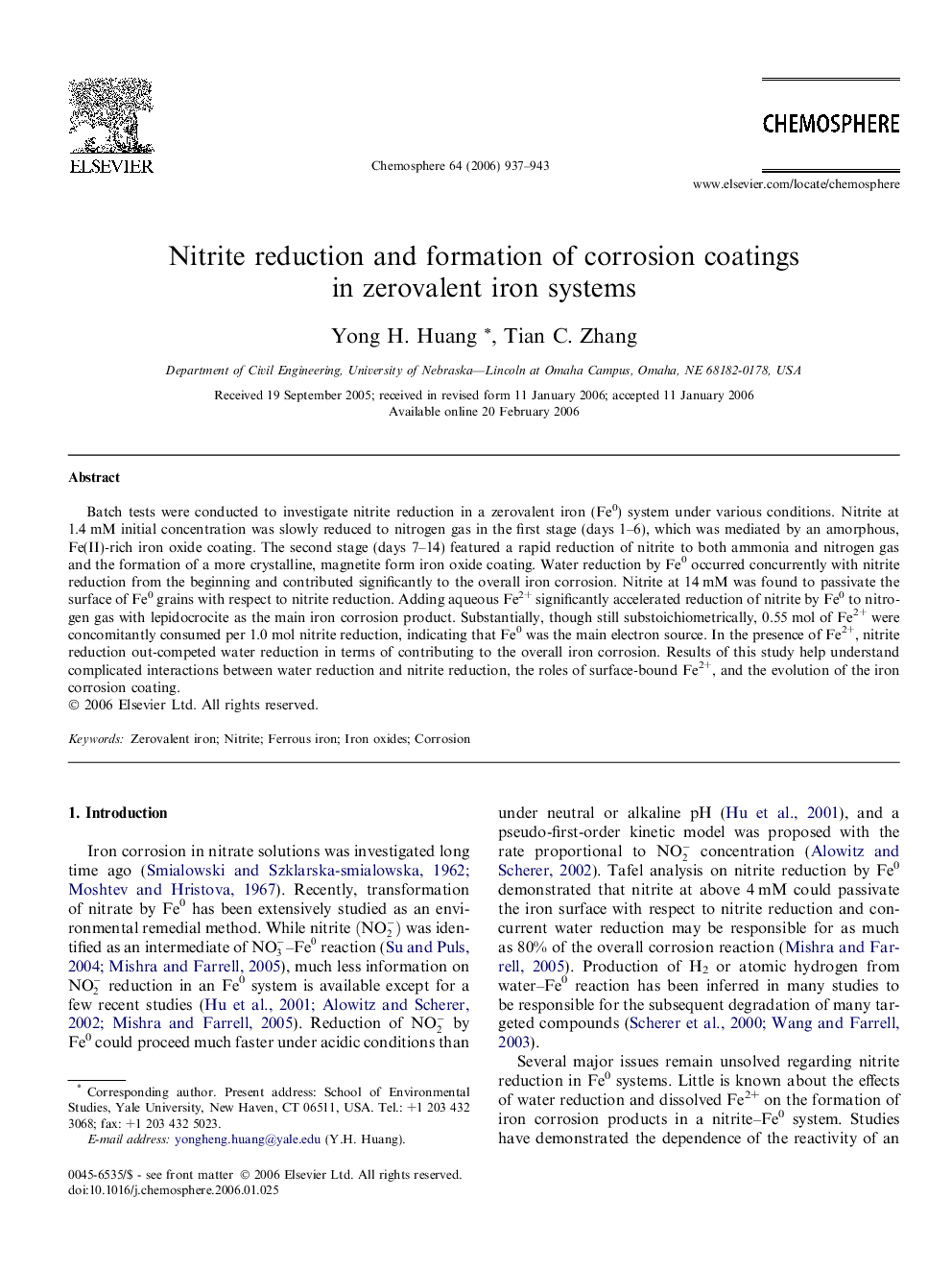| Article ID | Journal | Published Year | Pages | File Type |
|---|---|---|---|---|
| 4416199 | Chemosphere | 2006 | 7 Pages |
Batch tests were conducted to investigate nitrite reduction in a zerovalent iron (Fe0) system under various conditions. Nitrite at 1.4 mM initial concentration was slowly reduced to nitrogen gas in the first stage (days 1–6), which was mediated by an amorphous, Fe(II)-rich iron oxide coating. The second stage (days 7–14) featured a rapid reduction of nitrite to both ammonia and nitrogen gas and the formation of a more crystalline, magnetite form iron oxide coating. Water reduction by Fe0 occurred concurrently with nitrite reduction from the beginning and contributed significantly to the overall iron corrosion. Nitrite at 14 mM was found to passivate the surface of Fe0 grains with respect to nitrite reduction. Adding aqueous Fe2+ significantly accelerated reduction of nitrite by Fe0 to nitrogen gas with lepidocrocite as the main iron corrosion product. Substantially, though still substoichiometrically, 0.55 mol of Fe2+ were concomitantly consumed per 1.0 mol nitrite reduction, indicating that Fe0 was the main electron source. In the presence of Fe2+, nitrite reduction out-competed water reduction in terms of contributing to the overall iron corrosion. Results of this study help understand complicated interactions between water reduction and nitrite reduction, the roles of surface-bound Fe2+, and the evolution of the iron corrosion coating.
